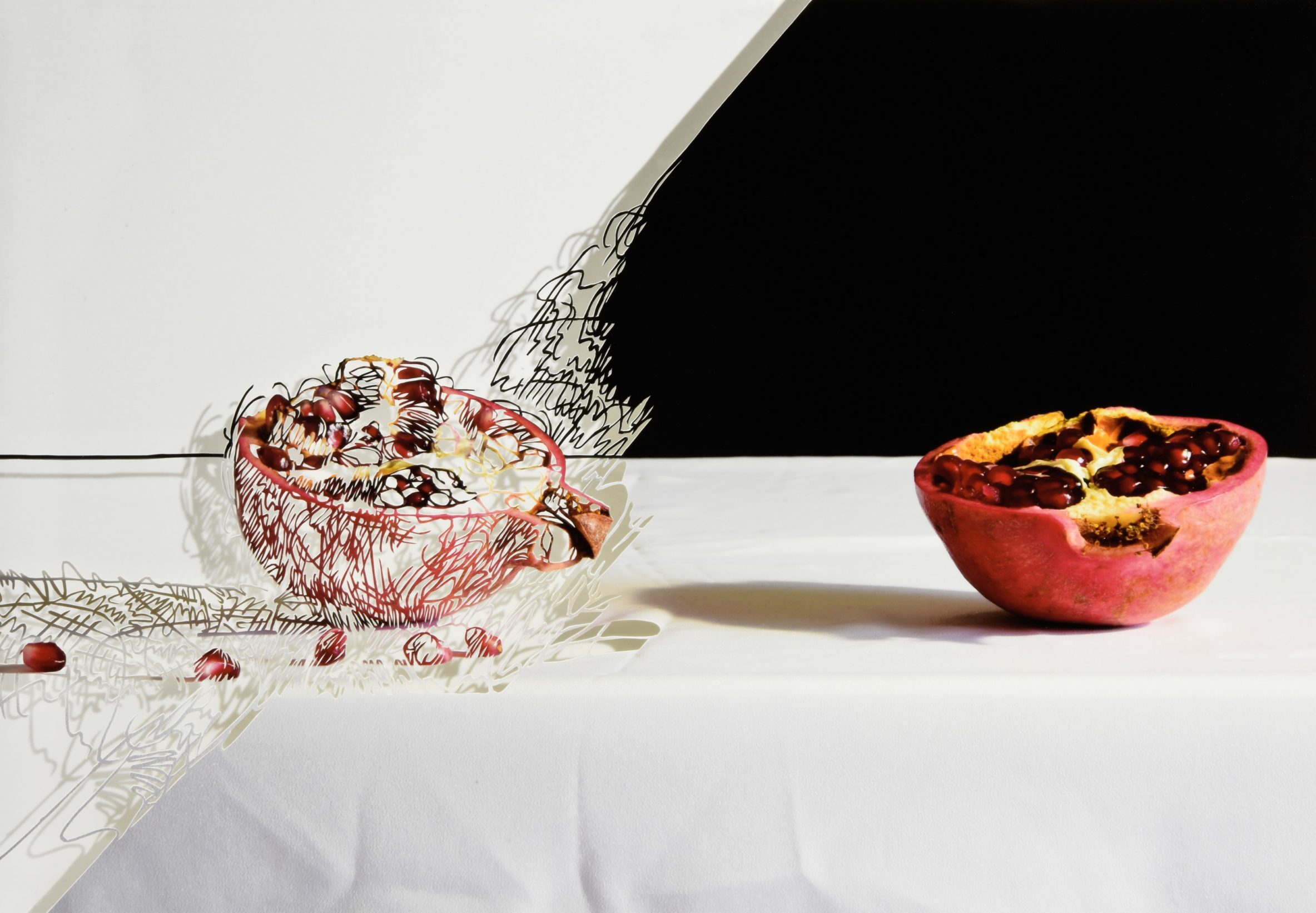Exhibition
Shu Ikeda : Object and Image
May 25 - June 23, 2019

Pomegranates #1
2019
cut-out photograph, mounted on acrylic
27 x 38 cm
Maki Fine Arts is pleased to present Object and Image, Shu Ikeda’s fifth solo show at Maki Fine Arts, starting Saturday, May 25, 2019. Using still-life painting in art history as the subject matter, Ikeda examines the relationship between object (physical matter) and image (image data) with a critical eye. Ikeda has been showcasing works that oscillate between painting and photography using nature and urban landscapes as motifs, creating unique shapes and negative spaces by cutting out the photographs and using the cut-out elements to design collages. His new works demonstrate how his creations continue to evolve; arbitrary elements have been curtailed while compositional ideas, such as utilizing the back side of a photograph and implementing inversions and contrast, have been incorporated.
Shu Ikeda
Born 1979 in Hiroshima, Japan, Ikeda’s past exhibitions include Sight (solo, Roppongi Hills A/D Gallery, 2018) and Why not live for Art? II – 9 collectors reveal their treasures (group, Tokyo Opera City Art Gallery, 2013). Object and Image marks Ikeda’s fifth solo exhibition with Maki Fine Arts following Reverse/Rebirth (2017), In Between Places (2015), From the Bloom to the Blank (2012), and Another Yesterday (2011). For the entire year of 2017, Ikeda’s works were features on the covers of Ohararyu Ikebana magazine, a monthly Japanese flower arrangement publication.
—
Still-life painting is one of the traditional genres in art history, initially placing emphasis on elaborate and lifelike representation of the real while incorporating metaphoric expressions, such as the implications of death and the fragility of human life and vanity. Since its establishment in 17th-century Western painting, it has been incorporated into works by artists including Chardin, Cézanne, Morandi, and others using the styles of Cubism and Surrealism. Beginning in the late 19th century, conforming to the meaning and reproducibility of the subject matter became less important, and more emphasis was placed on compositional aspects on the surface. By the early 20th century, still-life paintings by Picasso and Braque were viewed as a landmark for the technique of collage. My previous work method consisted of capturing scenes of nature and urban landscapes with a camera and cutting out those photos to use them in collage. I realized that, from the perspective of subject placement and composition as well as from the perspective of history, still-life painting was intimately related to collage, and this realization became the genesis and bedrock of the works presented in Object and Image. For my new works, I referenced past still-life paintings and extracted elements while blending cut-outs and collage techniques to mark my own current expression. By cutting into the photographs, the elements of paintings/photographs, physical matter/images, and exterior/interior are realized, and the surface is recomposed to allow conflicting mutuality to coexist. Today, we scroll through massive amounts of doctored photos. It is my hope that pausing and noticing the illusionary images or the tenuous materiality and reality can help the viewers feel amazement and amusement that comes with the act of seeing.
-Shu Ikeda

